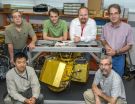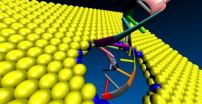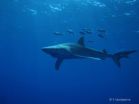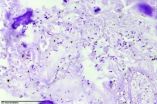(Press-News.org) Putting three radars on a plane to measure rainfall may seem like overkill. But for the Integrated Precipitation and Hydrology Experiment field campaign in North Carolina recently, more definitely was better.
The three instruments, developed by the High Altitude Radar group at NASA's Goddard Space Flight Center in Greenbelt, Maryland, flew as part of the Global Precipitation Measurement (GPM) mission's six-week ground-validation program that took place May 1 through June 15 in the southern Appalachians, specifically to measure rain in difficult-to-forecast mountain regions. In addition to validating measurements, the campaign tested data-processing algorithms made by the GPM Core Observatory, launched in February.
The campaign represented a first for NASA. Never before has the agency flown more than two radar systems, tuned to different frequencies, to measure rainfall in the field. In addition, two of the instruments were making their maiden flight to demonstrate technological improvements that may pave the way for future high-performance airborne or space-borne precipitation radars for studying storms.
Future precipitation missions and, more particularly, the Aerosol Clouds Ecology, or ACE, mission, which the National Research Council recommended in its Earth Science Decadal Survey, have made the development of new radar systems to observe clouds and light precipitation a priority.
Why Radar and Why Three?
The decision to fly three different systems was far from overkill, according to campaign scientists.
Rainfall comes in more than 31 flavors, from tiny cloud droplets and misty drizzle, to fat raindrops and two-inch hailstones, and, of course, everything in between. Different radar frequencies pick up different precipitation types, generally based on size and whether the particles are ice or liquid. Radars flying with multiple frequencies can study more precipitation types and identify where they occur inside clouds, giving scientists a more complete picture of the inner workings of a rainstorm.
In particular, lower-microwave frequencies can detect heavy rain all the way to the ground. But tiny cloud particles require a higher-microwave frequency signal to detect them. Because that signal sometimes gets attenuated before it makes it all the way through the cloud and back to the radar, precipitation radars traditionally require a large, high-powered antenna.
What's Old is New Again
Enter the Cloud Radar System, a 20-year-old radar that has been completely rebuilt from the inside out, said Gerry Heymsfield of Goddard's High Altitude Radar group, which revamped the instrument. "The old one was a good radar," Heymsfield said, "but the big difference in the new one is we're using a solid-state transmitter." The new transmitter, which sends the radar pulse, requires less power, occupies less space, and returns more reliable results — advances that make a radar system more suitable for aircraft and satellites.
The Cloud Radar System also sports a new antenna for receiving the data-laden return signals, or backscatter, of the radar pulse. Partners at Northrup Grumman designed the new antenna, led by Goddard Principal Investigator Paul Racette, and the result is a scaled down, proof-of-concept of what may one day fly in space, Heymsfield said.
The Cloud Radar System design grew out of a similar approach the High Altitude Radar group used to build the two other radars that measured rainfall during the campaign: the High-altitude Wind and Rain Profiler (HIWRAP), and the ER-2 X-Band Radar (EXRAD).
Satellite Simulator
During the field campaign in North Carolina, all three radars flew at an altitude of 65,000 feet on NASA's ER-2 aircraft, managed by Armstrong Flight Research Center in Edwards, California. Beneath the ER-2, a second plane, managed by the University of North Carolina, flew through clouds to collect data on the details of the precipitation and cloud particles. On the surface, NASA's GPM team worked with NOAA's Hydrometeorological Test Bed and Duke University to capture precipitation as it hit the ground, using ground-based radar that scanned the air between the surface and the rainclouds and a network of rain gauges throughout the mountains and valleys.
During the six-week field campaign, HIWRAP — one of several instruments also used on NASA's Hurricane and Severe Storm Sentinel mission flying later this summer and fall — stood in for the GPM satellite. Its two radar frequencies, 35 gigahertz for light rain and 13.5 gigahertz for heavy rain, are nearly identical to the GPM Core Observatory's Dual-frequency Precipitation Radar. Scientists collected the data, which they now will process with computer algorithms specifically designed to convert radar-retrieval data into rain estimates. They then will compare those estimates with the ground data to determine whether they need to fine-tune the algorithms, Heymsfield said.
EXRAD, like the retooled Cloud Radar System, made its flight debut during the campaign. It complemented HIWRAP by gathering data in the 10-gigahertz frequency band ideal for measuring big raindrops and hail in thunderstorms. Unlike the other radars that just point down, EXRAD also has a scanning capability to capture rainfall over a wider field of view below.
Unique Capability
Multiple radars with multiple frequencies looking at the same storm provided the science team with a unique capability, Heymsfield said. As the ER-2 flew overhead, the radars and other instruments captured how the range of cloud droplets, raindrops, and ice pellets moved and changed relative to one another over time. Those observations get at the heart of how storm systems behave, which in turn will lead to better models used for weather and flood forecasting, Heymsfield said.
"When you look at different clouds with different frequencies, it tells a lot about the cloud particles that are in there," said Heymsfield. "Having four frequencies on the ER-2 allowed us to measure a much broader range of cloud and precipitation that will help both GPM and future cloud and precipitation missions."
INFORMATION:
Three radars are better than one: Field campaign demonstrates two new instruments
2014-08-13
ELSE PRESS RELEASES FROM THIS DATE:
New material could enhance fast and accurate DNA sequencing
2014-08-13
CHAMPAIGN, Ill. — Gene-based personalized medicine has many possibilities for diagnosis and targeted therapy, but one big bottleneck: the expensive and time-consuming DNA-sequencing process.
Now, researchers at the University of Illinois at Urbana-Champaign have found that nanopores in the material molybdenum disulfide (MoS2) could sequence DNA more accurately, quickly and inexpensively than anything yet available.
"One of the big areas in science is to sequence the human genome for under $1,000, the 'genome-at-home,'" said Narayana Aluru, a professor of mechanical ...
Patent examiners more likely to approve marginal inventions when pressed for time
2014-08-13
CHAMPAIGN, Ill. — Haste makes waste, as the old saying goes. And according to research from a University of Illinois expert in patent law, the same adage could be applied to the U.S. Patent and Trademark Office, where high-ranking examiners have a tendency to rubber-stamp patents of questionable merit due to time constraints.
The less time patent examiners are given to review an application, the more likely they are to grant patent protection to inventions "on the margin," says a study co-authored by Melissa Wasserman, the Richard and Anne Stockton Faculty Scholar and ...
Bones from nearly 50 ancient flying reptiles discovered
2014-08-13
Scientists discovered the bones of nearly 50 winged reptiles from a new species, Caiuajara dobruskii, that lived during the Cretaceous in southern Brazil, according to a study published August 13, 2014 in the open-access journal PLOS ONE by Paulo Manzig from Universidade do Contestado, Brazil, and colleagues.
The authors discovered the bones in a pterosaur bone bed in rocks from the Cretaceous period. They belonged to individuals ranging from young to adult, with wing spans ranging from 0.65-2.35m, allowing scientists to analyze how the bones fit into their clade, but ...
Embalming study 'rewrites' chapter in Egyptian history
2014-08-13
The origins of mummification may have started in ancient Egypt 1,500 years earlier than previously thought, according to a study published August 13, 2014 in the open-access journal PLOS ONE by Stephen Buckley from University of York and colleagues from Macquarie University and University of Oxford.
Previous evidence suggests that between ~4500 B.C. and 3100 B.C., Egyptian mummification consisted of bodies desiccating naturally through the action of the hot, dry desert sand. The early use of resins in artificial mummification has, until now, been limited to isolated occurrences ...
Little penguins forage together
2014-08-13
Most little penguins may search for food in groups, and even synchronize their movements during foraging trips, according to a study published August 13, 2014 in the open-access journal PLOS ONE by Maud Berlincourt and John Arnould from Deakin University in Australia.
Little penguins are the smallest penguin species and they live exclusively in southern Australia, New Zealand, and the Chatham Islands, but spend most of their lives at sea in search of food. Not much is known about group foraging behavior in seabirds due to the difficulty in observing their remote feeding ...
Young blue sharks use central North Atlantic nursery
2014-08-13
Blue sharks may use the central North Atlantic as a nursery prior to males and females moving through the ocean basin in distinctly different patterns, according to a study published August 13, 2014 in the open-access journal PLOS ONE by Frederic Vandeperre from University of the Azores, Portugal, and colleagues.
Shark populations typically organize by location and separate by sex and size, but these patterns remain poorly understood, particularly for exploited oceanic species such as the blue shark. The authors of this study employed a long-term electronic tagging experiment ...
Bacterial biosurgery shows promise for reducing the size of inoperable tumors
2014-08-13
Kansas City, MO. — Deep within most tumors lie areas that remain untouched by chemotherapy and radiation. These troublesome spots lack the blood and oxygen needed for traditional therapies to work, but provide the perfect target for a new cancer treatment using bacteria that thrive in oxygen-poor conditions. Now, researchers have shown that injections of a weakened version of one such anaerobic bacteria -- the microbe Clostridium novyi -- can shrink tumors in rats, pet dogs, and a human patient.
The findings from BioMed Valley Discoveries and a nationwide team of collaborators ...
Embalming study 'rewrites' key chapter in Egyptian history
2014-08-13
Researchers from the Universities of York, Macquarie and Oxford have discovered new evidence to suggest that the origins of mummification started in ancient Egypt 1,500 years earlier than previously thought.
The scientific findings of an 11-year study by a researcher in the Department of Archaeology at York, and York's BioArCh facility, and an Egyptologist from the Department of Ancient History at Macquarie University, push back the origins of a central and vital facet of ancient Egyptian culture by over a millennium.
Traditional theories on ancient Egyptian mummification ...
Injected bacteria shrink tumors in rats, dogs and humans
2014-08-13
A modified version of the Clostridium novyi (C. noyvi-NT) bacterium can produce a strong and precisely targeted anti-tumor response in rats, dogs and now humans, according to a new report from Johns Hopkins Kimmel Cancer Center researchers.
In its natural form, C. novyi is found in the soil and, in certain cases, can cause tissue-damaging infection in cattle, sheep and humans. The microbe thrives only in oxygen-poor environments, which makes it a targeted means of destroying oxygen-starved cells in tumors that are difficult to treat with chemotherapy and radiation. The ...
Treatment with lymph node cells controls dangerous sepsis in animal models
2014-08-13
An immune-regulating cell present in lymph nodes may be able to halt severe cases of sepsis, an out-of-control inflammatory response that can lead to organ failure and death. In the August 13 issue of Science Translational Medicine, a multi-institutional research team reports that treatment with fibroblastic reticular cells (FRCs) significantly improved survival in two mouse models of sepsis, even when delivered after the condition was well established. Even after treatment with antibiotics, sepsis remains a major cause of death.
"Our findings are important because, ...





